TL;DR: The Huawei Watch GT looks amazing, lasts an incredibly long time, but lacks some key functionality.
I love smartwatches. There’s something inherently futuristic about them, even though you’ll eventually have to replace them once they’re outdated, unlike a classic watch.
I don’t love smartwatches that are too bulky, fit weird, don’t last a whole day, and, well, look terrible.
I love the Huawei Watch GT (check out where Huawei came from with our Huawei Watch 2 review)— it looks wonderful, fits perfectly, and lasts a long time. It doesn’t run on WearOS, though, which is Google’s smartwatch OS, and that does come with some drawbacks ad Huawei’s replacement OS might not be robust enough for some people.
Huawei Watch GT Review: Design
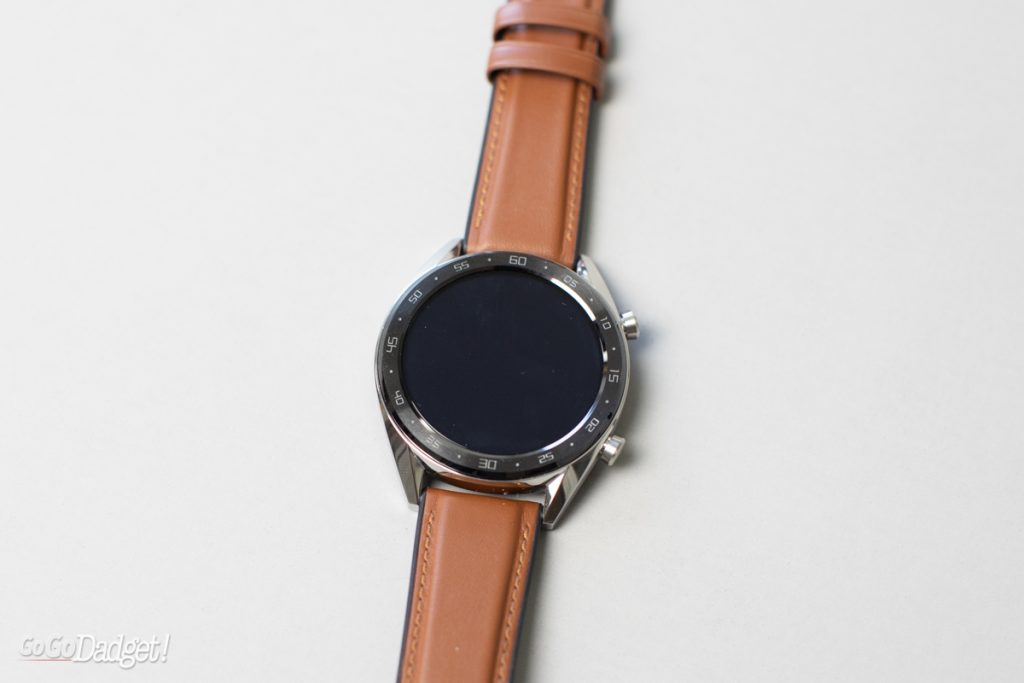
I have zero qualms about how the Huawei Watch GT is designed. In fact, it might be the best looking smartwatch I’ve ever worn — and that includes an Apple Watch, because there’s something I enjoy more about a round face than a square.
The Huawei Watch GT has an incredibly slim profile, a beautiful 1.39 inch AMOLED screen (454 x 454, PPI 326), is built out of Metal + Plastic + Ceramic, has always-running heart rate monitoring, a battery life up to 2 weeks, and my unit had a leather/silicone strap that looks sharp but can be used for working out too.
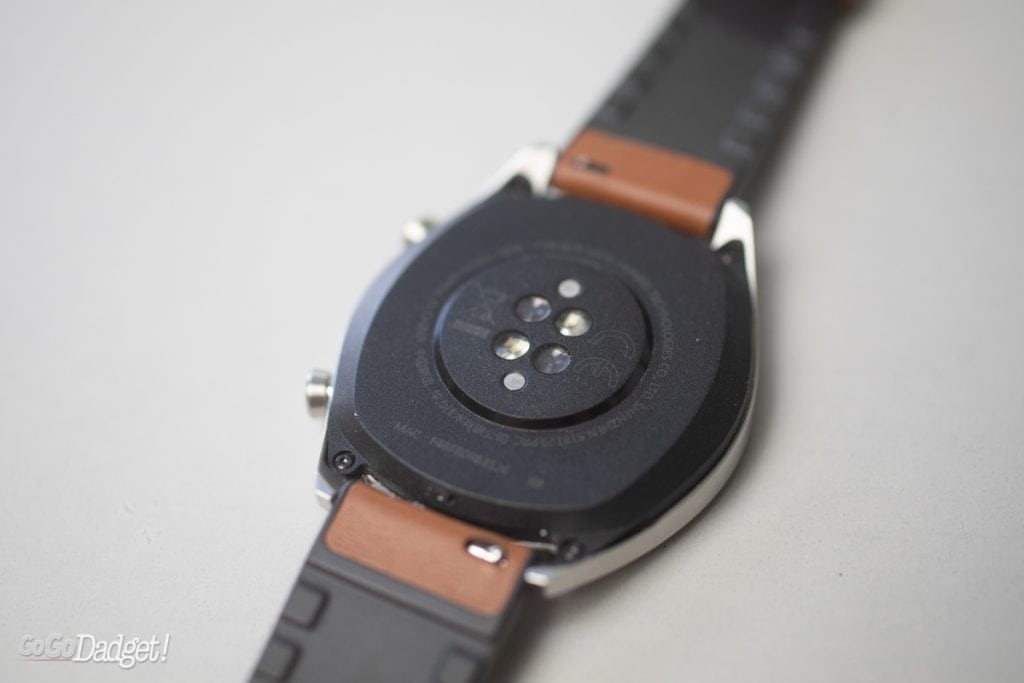
It has a proprietary charging cable that connect magnetically, and two physical buttons on the side — one for power and one for function. It has GPS, but no WiFi (helps save battery life, I suspect), Bluetooth 4.2 LE, and Huawei’s own OS.
At just 10.6mm tall, the low profile on this watch is actually low profile, and I love it. The screen is sharp, and one of Huawei’s built-in watch faces is one of my favorites I’ve had on any watch. Plus, the screen has an almost matte quality to it, which gives all of the faces and menus a clarity and texture that look incredibly good.
I put the watch through the paces, too, and as a dad I can’t really baby tech like I do my children — and it toughed out every outing we had, and was sent back to Huawei without a scratch. So, I’d say it’s durable, too, and with 50M water resistance you can track your swimming with it too.
The Software
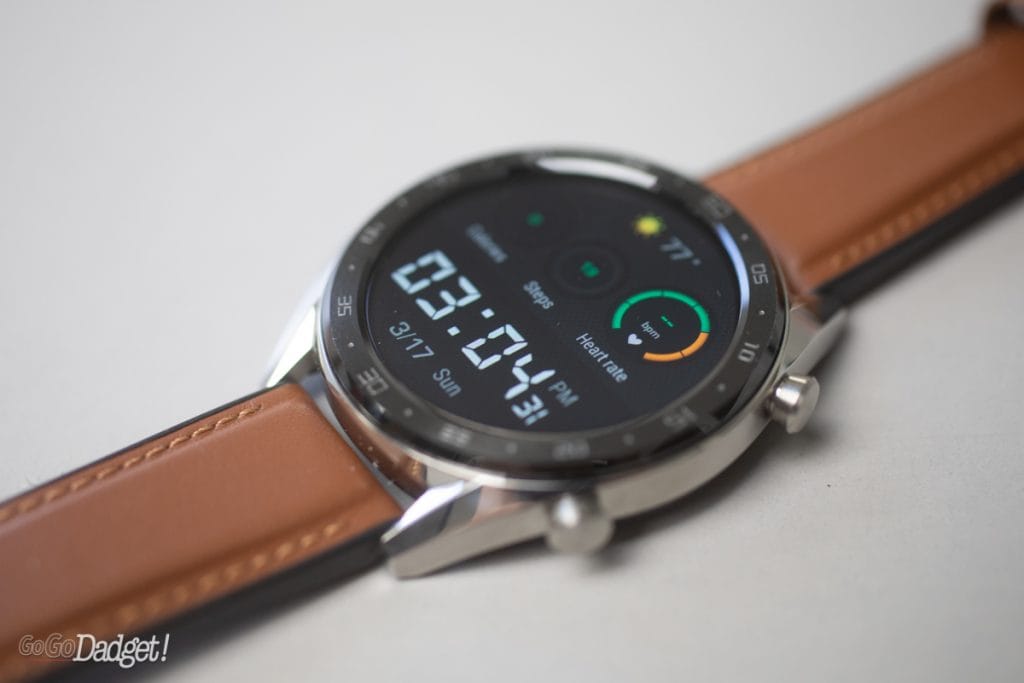
There are many pros to Huawei’s custom OS running on the GT. It extends battery life for sure, the watch faces are nice (even though there aren’t many of them), and the workout screens are easy to navigate and give fast and accurate information. Instead of hunting for the “spinning” option in WearOS and Google Fit, the Indoor Cycling was much easier to find and operate.
On top of this, I feel like it tracked my heart rate and work out more accurately than my TicWatch E does running WearOS and Google Fit, and I like that the watch scans my heart rate constantly, so I know exactly how things are going before, during, and after working out without having to manually check the rate.
My other favorite thing about the Huawei Watch GT is the baked-in sleep tracking. Because the battery life lasts so long, you can wear the watch constantly without worry, even through the night, and because of how low-profile it is, it’s also comfortable enough to sleep in. You can see just how bad your night sleep was when your 3-year-old wakes up multiple times. Fun!
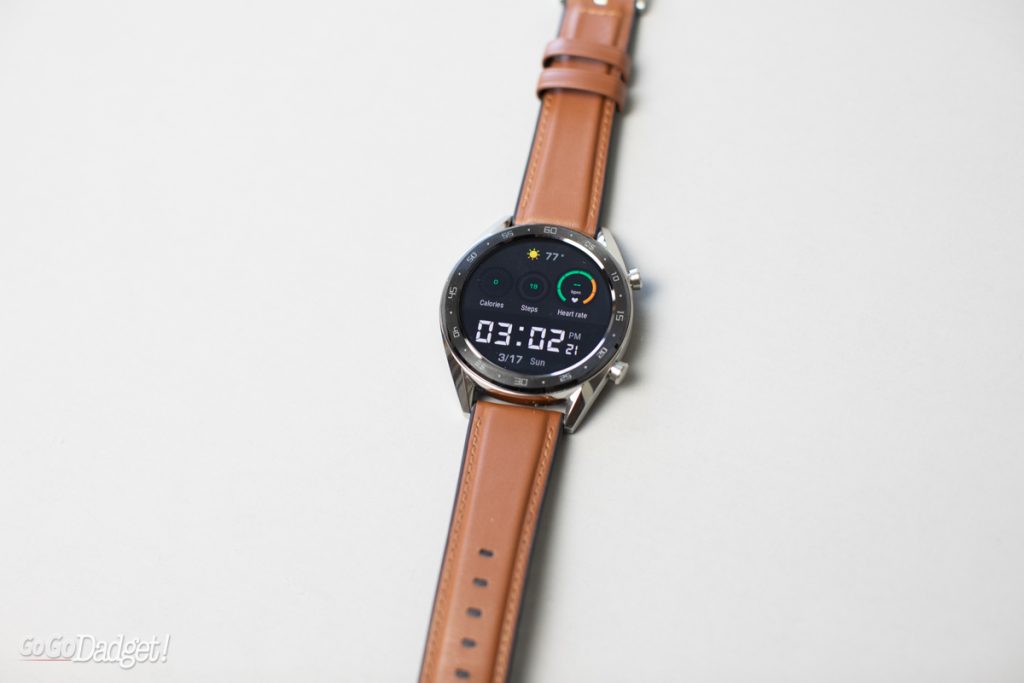
There are downsides to the Huawei Watch GT’s OS, though, and that comes in the form of interactive functionality. You can’t respond to texts, emails, or phone calls — you can only read the notifications. You can’t download any apps from the Play Store (duh), and you can’t load music onto the device, or connect headphones to it. And there aren’t many watch faces.
To me, though, that’s something that can probably be updated and fixed either through future software or even physical iterations of the watch, but I know why they aren’t there — and its name is battery life.
The Battery
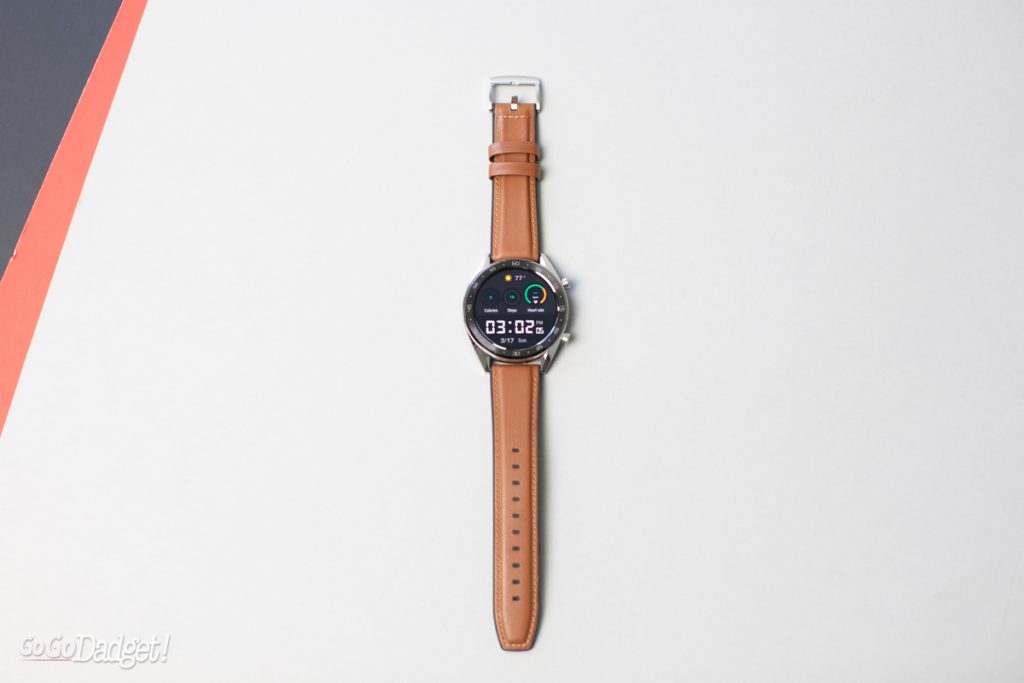
Not since my days of wearing a Pebble (RIP, Pebble) have I had such a carefree time wearing a smartwatch. Huawei advertises 14 days of normal use, and I made it to 13.5 — I played around with it a lot for testing, too. They’re right on the money.
It’s easy to get into the habit of charging your smartwatch every night if you have the cable next to your bed, but if you want to track your sleep, the Huawei Watch GT’s battery life is a godsend.
Seriously, unless you’re rocking an Amazfit Bip, this is the best battery bang for your buck.
The Downsides
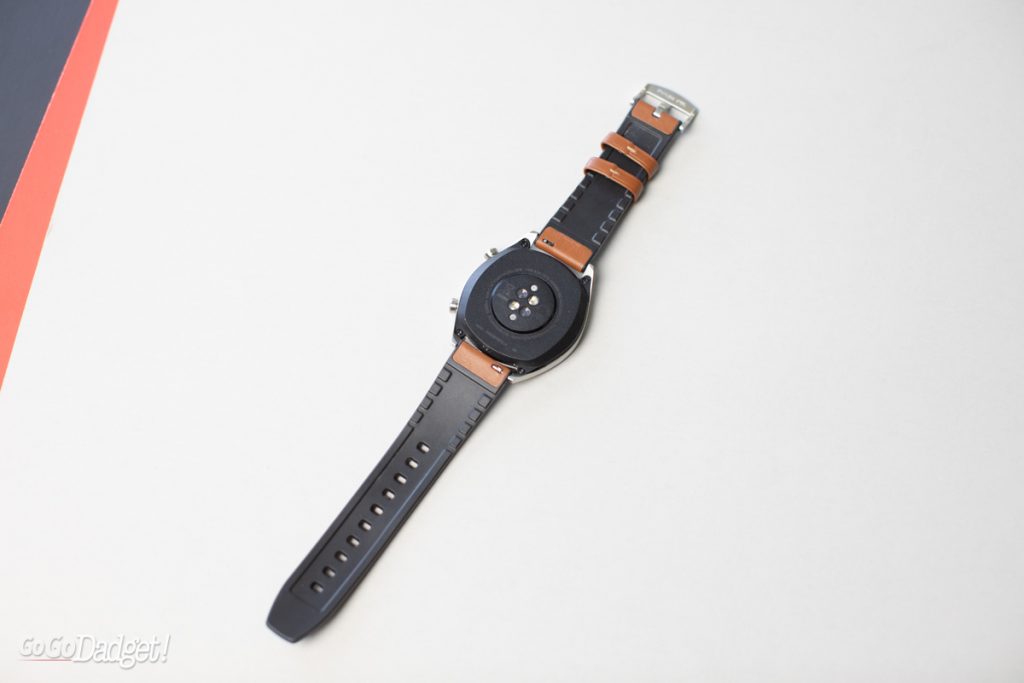
I can’t call not having Wear OS a total downside, but the functionality that comes with Google’s offering has it’s perks. Being able to answer calls and respond to texts and emails without pulling out your phone on an exercise bike, or while your phone is charging in another room, is great.
The battery life hit that WearOS gives, is not.
So, the downside isn’t that the watch doesn’t have WearOS, it’s the Huawei’s OS doesn’t offer that functionality. It’s more of a fitness tracker that has message alerts than a full-on smartwatch.
This is odd, too, but I was constantly buzzed by weather updates. I went and tried to turn off notifications from all my apps that might be doubling up on Huawei’s, and I still was buzzed multiple times an hour.
In Conclusion
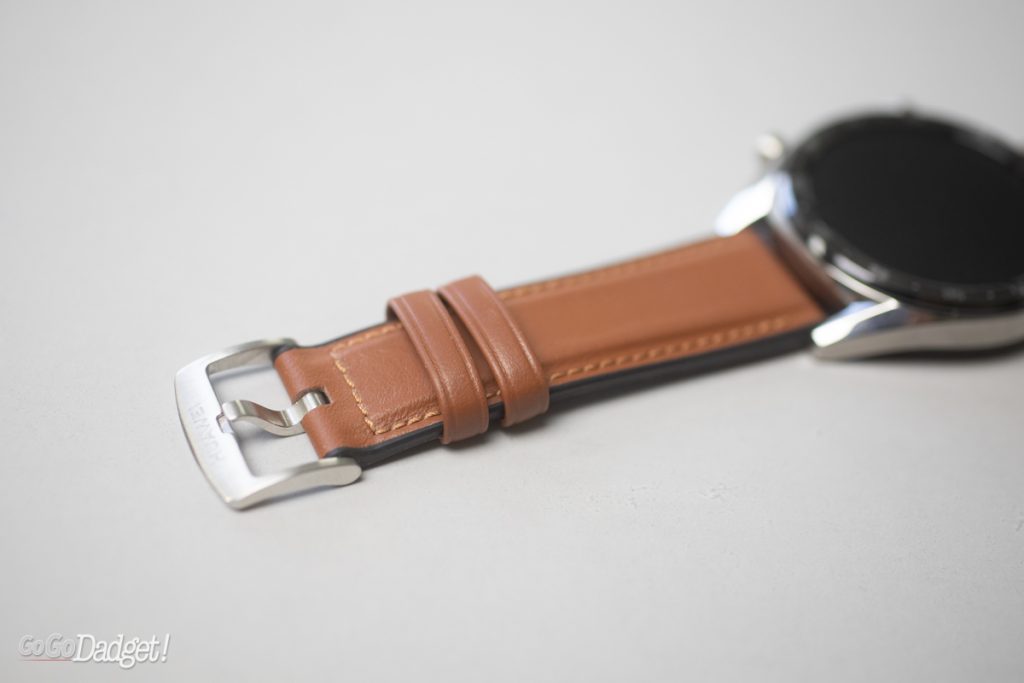
Look, for around $200, there aren’t a ton of options for smartwatches. Mobvoi has the Ticwatch E, Ticwatch S, and Ticwatch Pro, but they don’t really come close to the Huawei Watch GT’s battery life — and even though the TicWatch Pro has a stand-by mode that technically beats it, you can really only tell the time and steps from that second screen. You can also find Samsung Gear S3’s for around the $200 price too, but again, you won’t be getting the battery life.
I think it’s worth the price for form factor alone. Made out of premium materials, the watch has a low-profile and looks great. It has the workout chops and battery life to boot. It tells the time, reads your heart rate, and alerts you to messages just fine.
So, in the end, we do recommend the Huawei Watch GT — especially if all those things are the only things that matter to you. Visit Huawei for more information, or grab one from Amazon.
